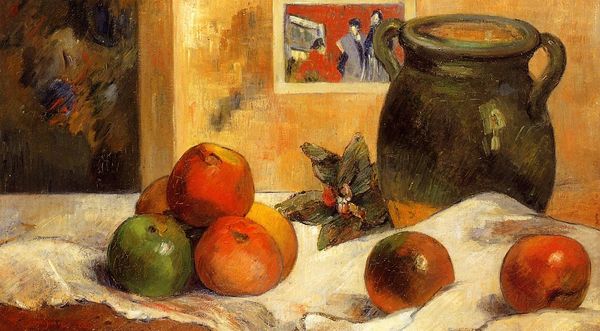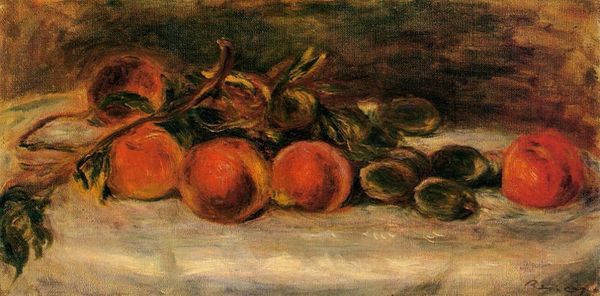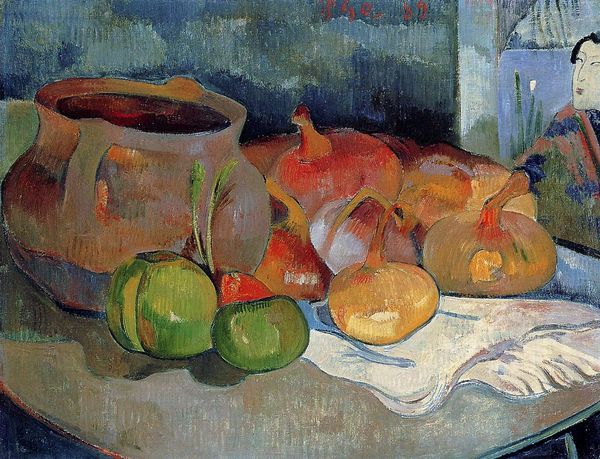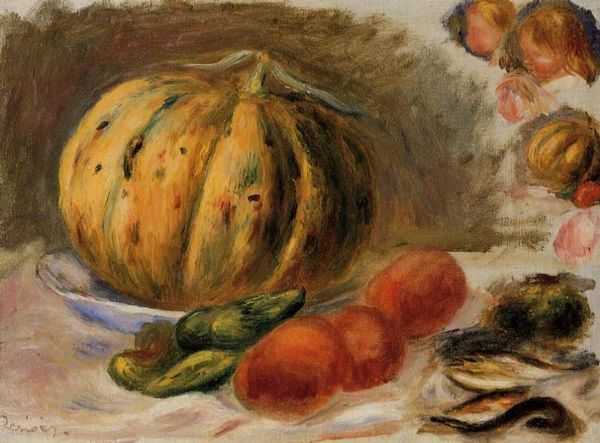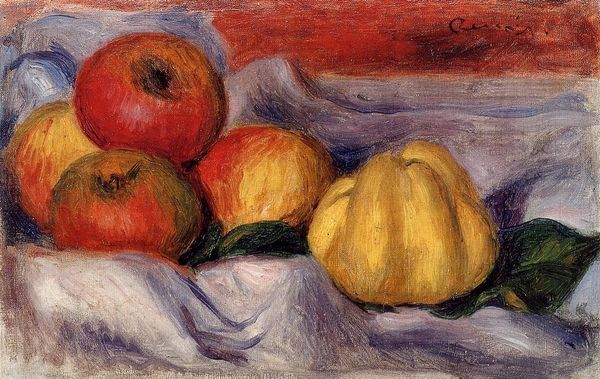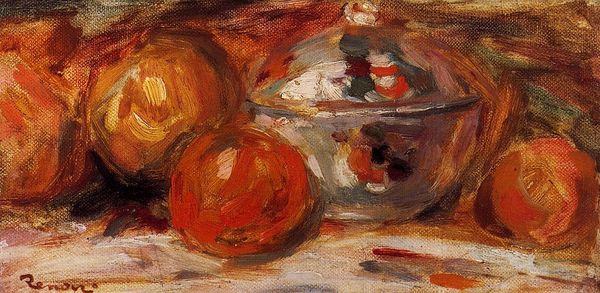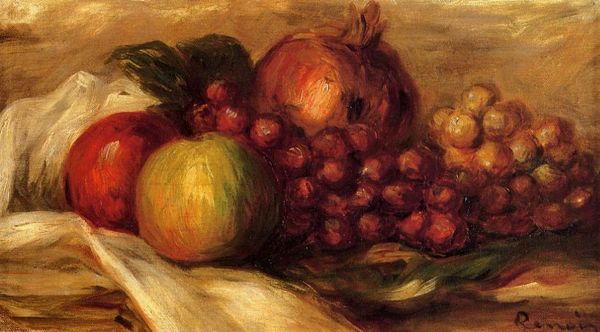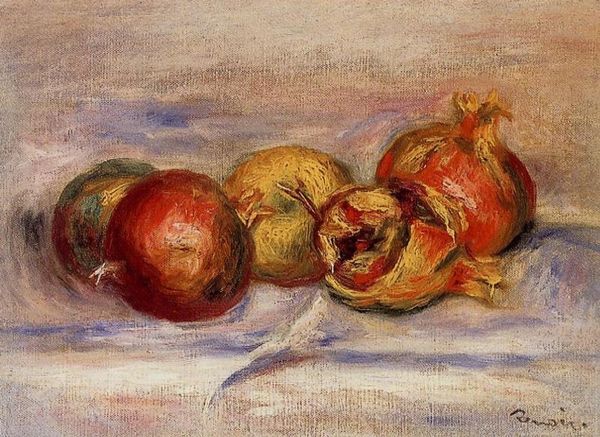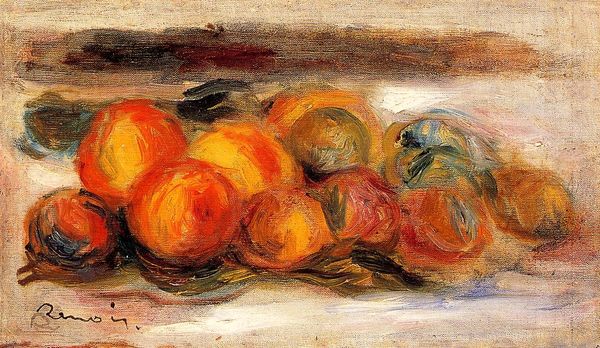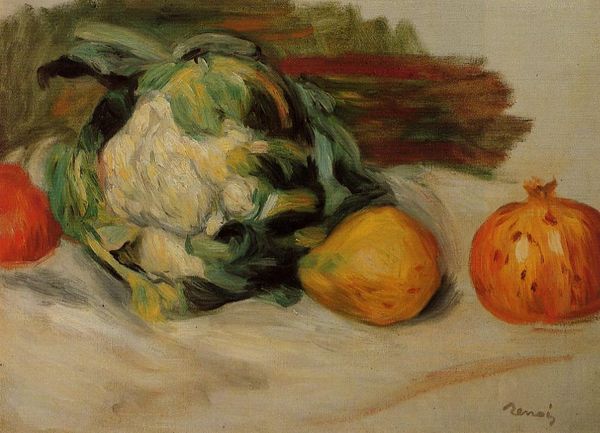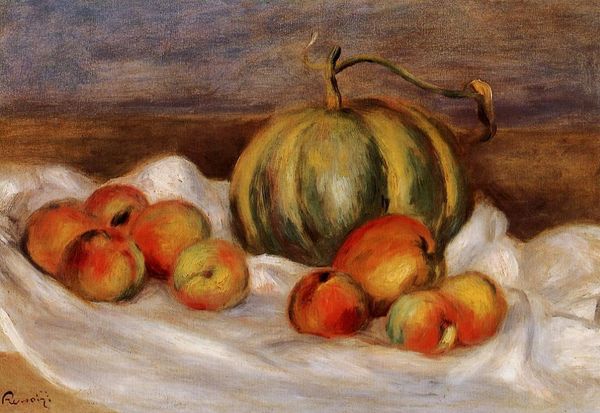
painting, oil-paint
#
portrait
#
still-life
#
painting
#
canvas painting
#
impressionism
#
oil-paint
#
oil painting
#
fruit
#
genre-painting
#
modernism
Copyright: Public domain
Curator: Renoir’s “Still Life with Fruit” presents us with a tableau of vibrant color and textural contrast, painted with the loose brushwork characteristic of Impressionism. Editor: It's interesting! The first thing I notice is the almost unsettling contrast between the luscious, overflowing fruit and the sort of downcast gaze of the woman partially hidden amongst the display. Curator: Yes, her inclusion definitely elevates it beyond a standard still life. It transforms the scene into something more complex—suggesting perhaps a commentary on female domesticity and its association with abundance, beauty, and maybe even… consumption. Editor: Exactly! I see it as an intimate portrait of a woman amongst symbols traditionally associated with fertility and nourishment. What statement might he be making by linking the two, given the socio-political status of women in the art world at the time? Curator: I’d argue Renoir’s approach stems more from an aesthetic sensibility. He prioritizes capturing the effects of light and color. The soft gradations of the fruit, for instance, or the way the light filters across her face... that really echoes the influence of plein air painting in Impressionism. He was focused on capturing visual phenomena. Editor: But can we completely divorce artistic expression from its societal backdrop? The way the composition situates the woman—almost hidden—makes me question what agency she has within this supposed domestic sphere of bounty. Is it celebration or commentary on the objectification? I think he opens the door to both ideas. Curator: These visual explorations certainly resonate within the broader historical narratives. But still lifes have also functioned historically as displays of wealth, as indicators of social standing and, of course, good taste. Consider how fruit functioned in seventeenth-century Dutch art. Renoir seems more interested in painting and less with that moral weightiness. Editor: I agree with you about the wealth indicators and access, absolutely. And I concede the composition revels in light and color. But for me, this piece offers space to examine societal expectations and constraints of womanhood. These luscious brushstrokes become layers of interpretations that question gender roles. Curator: Ultimately, whether intended or not, I think “Still Life with Fruit” holds within it numerous cultural, gendered, and socio-political narratives. Editor: Agreed. A beautiful example of how art can trigger broader conversations about power, privilege, and representation through simple arrangements and color alone.
Comments
No comments
Be the first to comment and join the conversation on the ultimate creative platform.
